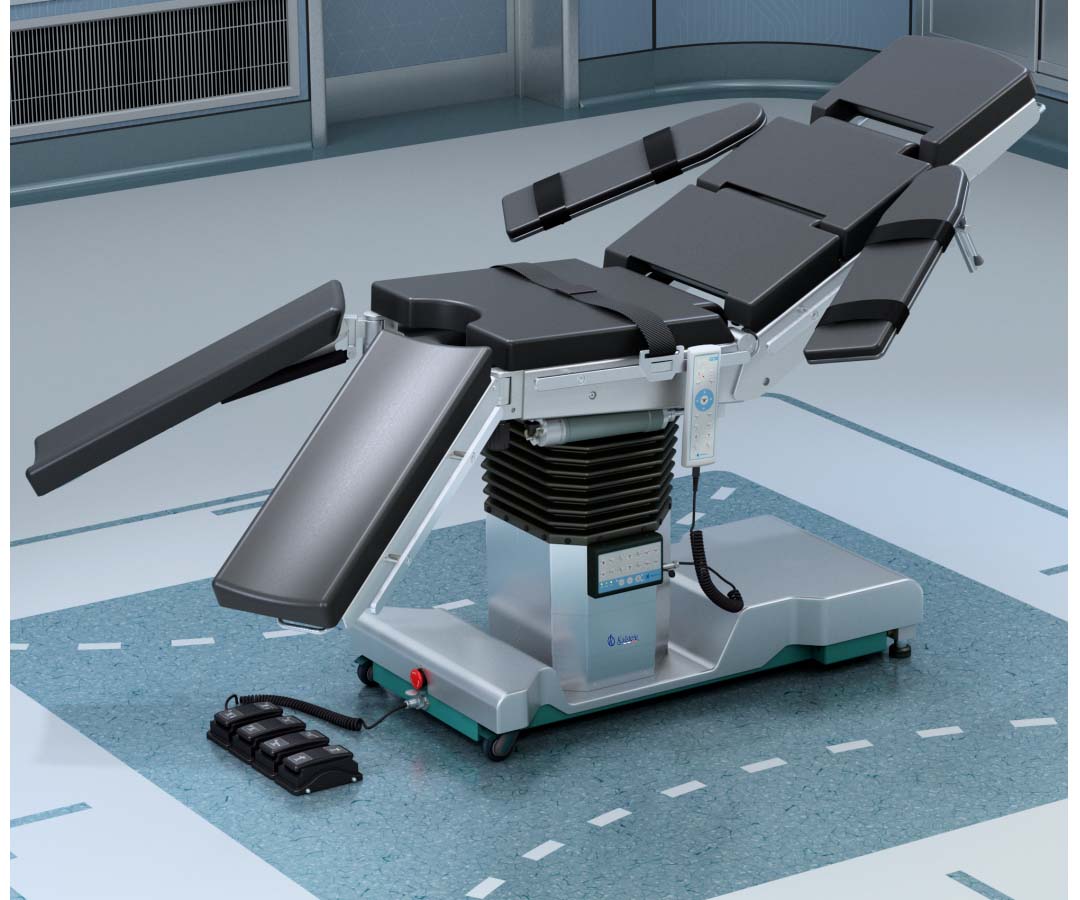An operating table is a medical team that meets a series of precise rules, whose function is to position the patient during a surgical procedure, it has specific standards for the desired clinical position. It consists of a platform divided into sections, where the patient can sit or lie down. It also has arms; a remote control that adjusts the patient’s positions relative to the surgeon, table tilt and height; and other accessories that contribute to the stability of each position.
These tables are designed in such a way that they enable the surgeon to perform surgical maneuvers necessary for successful surgery because the size, weight, and instrumental accuracy may affect the results of a surgery. The importance of the operating table lies in its usefulness within the operating room, it fulfills the crucial function of facilitating the surgical approach, placing the patient in the best position in relation to the surgeon.
How is an operating table made up?
The operating tables consist of a main platform, on which the patient can sit or lie down as needed, and a central base, which allows the height and tilt of the table to be adjusted. They have postural controls that allow you to manipulate, flex or extend them to the desired position. Some tables have a metal crossbar or body elevator between the two upper sections that can be raised for gallbladder or kidney operations.
Operations desks are classified into universal operations desks and special operations desks, which in turn are classified into different models depending on the medical specialties for which they are used. Universal operating tables are used for general, digestive and minor surgery. They are very versatile and adaptable to most cardiovascular, bladder, cosmetic surgery, among others. While special operations desks are used for one or more medical specialties. They are characterized by their specific configuration and accessories.
Positions where an operating table is used
- Supine position: This is the traditional position used on the surgical table, where the patient is placed face up. Of this variation are the recumbent position with cranial fixation, the recumbent position with traction of lower extremities in 180°, the supine position with hyperextension of neck, and the recumbent position with head brace
- Trendelenburg: The patient lies on the tilt table, and the patient’s limbs are positioned higher than their head. It is a variant of the supine position. This position is suitable for operations in the abdominal area and contributes to a better visualization of organs.
- Reverse Trendelenburg: The patient lies also on the tilt table, and their limbs are positioned lower than their head. It is a variant, in turn, of the Trendelenburg position. This position is very convenient for head and neck operations.
- Ventral recumbency: This position is suitable for surgery of the dorsal region or operations of the spine, for example. In this position, the patient is positioned face down, placing the head in a facial positioning device.
- Lateral decubitus position: It is ideal for hip or kidney operations, among others, and consists of positioning the patient lying laterally with the area to be operated up. Place the upper extremities on the armrests and the head should be aligned with the trunk; the lower extremities are superimposed, with the lower one extended and the upper one inclined; for patient stability, two lateral fasteners are added. Its variants are lateral decubitus position with abdominal partition and lateral decubitus with chest partition.
- Prone position: Used in microdisectomy and lumbar canal stenosis. It consists of placing the patient in a kneeling prone position, in which the trunk rests on pads that avoid injury that could be caused by unfavorable pressure in the chest. The upper extremities are placed in the armrest at the same height as the head.
- Prone sledding: For lumbar intervention. The sled is a hollow frame that allows the chest and abdominal cavities to be spared pressure, preventing pressure and chafing. Position the patient face down, upper extremities on each armrest, and lower extremities rest on the knees and insteps of the feet. A roller at the ankles prevents the feet from being squeezed or squeezed.
- Sitting: This is a position used in oral surgery where the patient requires sitting. So, the table is positioned in the shape of an armchair, placing the patient at a 90° angle.
- Lithotomy: It is used by women in labor, where the feet are placed on the rest of the legs or stirrups, allowing a space between legs.
What do we offer you in Kalstein?
Kalstein is a company MANUFACTURER of medical and laboratory equipment of the highest quality and the best technology at the best prices in the market, so you can make your purchase confidently with us, knowing that you have the service and advice of a company specialized in the field and committed to innovation. This time we present our Operations Table YR02153. This table has the following features:
- Impressive improvements in functional performance, user interaction, and operational security. It is a universal operating table, offering effective solutions for the widest variety of requirements in the operating room.
- It is an ideal operating table for use in general surgery, thoracic surgery, obstetrics and gynecology, orthopedics, urology, brain surgery, and otolaryngological surgery.
For more information we invite you to take a look: HERE

